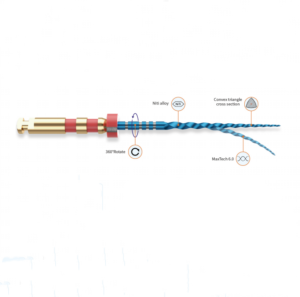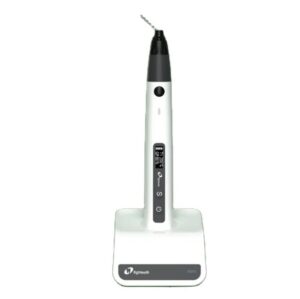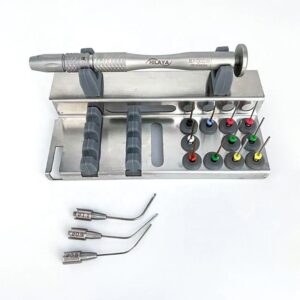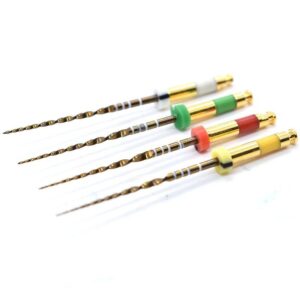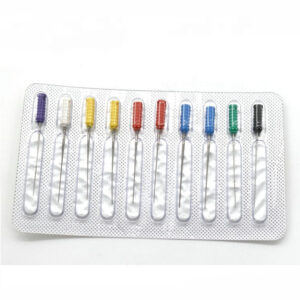ENDODONTICS TREATMENT:ROOT CANAL PREPARATION
Endodontic treatment aims to provide the body with the appropriate means to maintain periapical health or recover it through repair and regeneration. Cleaning, modeling, and sealing in the three dimensions of the root canal system are essential to achieving this goal and preventing the tooth’s reinfection.
Endodontic files and reamers are surgical instruments that dentists use to perform root canals. These tools are used to clean and shape the root canal with the concept of performing a complete chemomechanical debridement of the root canal along the apical foramen. Preparation of the canal facilitates chemical disinfection to a satisfactory length and provides a form conducive to plugging (canal filling).
Success in endodontics depends mainly on the surgical preparation of the root canals. The surgical preparation is closely related to the instruments used; therefore, its characteristics, properties, and kinematics must be precisely known.
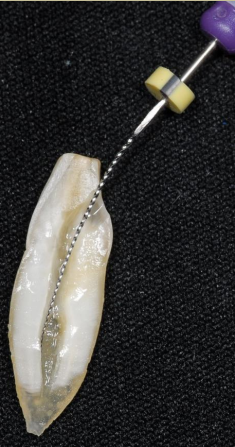
THEN WE WILL DO A REVIEW OF THE INSTRUMENTS TO PREPARE THE DUCTS MANUALLY:
Most used endodontic files types as followings
K-type files (K-files) are operated manually, with tight spirals, arranged so that cutting occurs both when pulling and pushing. They are used to enlarge the root canals by cutting action or by abrasive action. Pre-curved small diameter K-files are also utilized for canal exploration, placing sealant cement (by turning the instrument counterclockwise), and filling techniques.

They are the most manufactured endodontic instruments in the world. They are currently made of stainless steel (in most cases). They have a helical angle of 45 °.
USES: Rotating and filing movements.
FUNCTION:
- Widen the duct
- Smooth exploration walls
- Achieve accessibility
- Remove material from the conduit
THERE ARE 3 VARIETIES OF TYPE K FILES
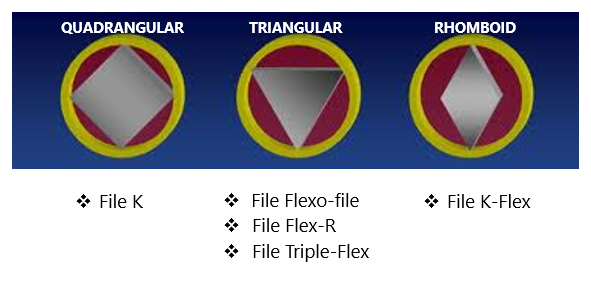
Hedströem files
Drag large amounts of fabric in its pull cut. A cutting edge that repeats throughout the instrument in a spiral shape. It is obtained from a conical stem that undergoes a turning process. It is used to smooth walls and remove material from ducts.

- It has a helicoidal shape.
- Turned instrument.
- They cut in one direction, retraction, due to the positive inclination of their grooves.
- They widen the space of the root canal.
- They are used after using a k file of a larger caliber.
- Use only in the straight portion (cervical and middle third of the radicular canal) of the root canal
Excellent cutting capacity. They do not serve to perform permeability (they do not open space in depth).
K-Reamers
They are used to enlarge the root canals using circular cutting movements. When inserted into the canal, they exert their action to make a quarter-turn clockwise to lock their cutting blades in the dentin and removed (penetration, twist, and retraction). The cut is made during retraction, and the process is repeated, penetrating deeper and deeper into the canal. When reaching the working length, the instrument of the following size is used, and so on. Files can be used as reamers, but these do not work well as reamers.
The main characteristic of producing a passive eddy. It will have 0.80 to 0.28 cutting grooves per millimeter on its part. Of triangular transverse configuration.
Features:
- Widening the canal evenly and progressively.
- Remove material from the conduit
- Manually or mechanically operated.
- They enlarge root canals.
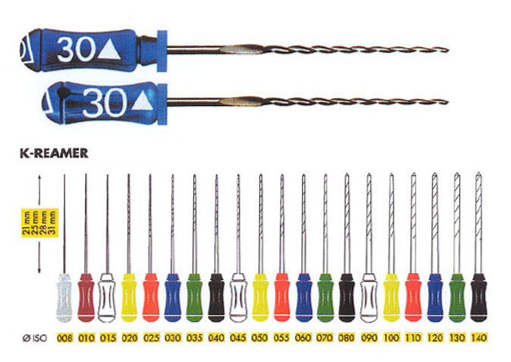
The great advantage of this instrument is the excellent removal of dentin residues.
INSTRUMENTS TO PREPARE THE DUCTS IN A MACHINED WAY
With time, endodontics was modernized to give rise to more powerful technologies around dentists‘ needs. For this reason, rotary or mechanized endodontic files were created to help prepare the root canal more comfortably and practically. Still, without turning away from manual files, taking them as a supplement facilitates endodontics.
Rotary files can be continuous or reciprocal rotation. Here are some examples of rotary files:
Protaper
The PROTAPER (Progressive Taper) instrumentation system (Dentsply Maillefer, Ballaigues, Switzerland) is a nickel-titanium continuous clockwise rotation mechanical instrumentation system; Designed by Clifford Ruddle, Pierre Machtou and John West, they were presented in May 2001 at the congress of the American Association of Endodontics (AAE).
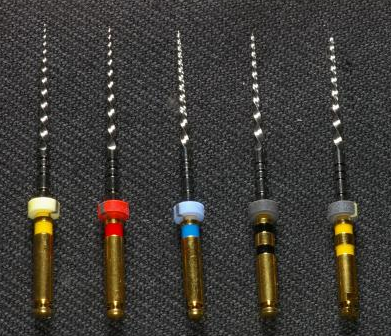
This system consists of 6 files: 3 for coronal shaping (Shaping Files) S1, S2, and Sx, and 5 for apical finishing (Finishing Files) F1, F2, F3, F4, and F5. This generation of files is commercially called PROTAPER UNIVERSAL.
- SHAPING FILES. Active part 14mm reshaping instrument for biting movement. In turn, they are divided into:
SX: golden ring, to widen the coronal third of the canal. Its the shortest of all files (19 mm), it has a diameter in D1 of 0.19 mm.
S1 (lilac ring, to widen the coronal and middle third of the canal). With an apical diameter D1 of 0.17.
or S2 (white ring, to widen the middle third of the canal). With a diameter of D1 of 0.20 mm.
- FINISHING FILES. Finishing the instruments to increase the diameter of the canal makes the apical stop in the root canal. According to the manufacturer, these files should be used only once, but some studies show that they can be used a more significant number of times. Available in 21, 25, and 31 mm and with 16 mm of active part and constant taper in the apical 3 mm.
Rotary instrumentation with Protaper manages to shorten endodontic treatments, thanks to developing new NiTi alloys with greater flexibility and safety when shaping the canal and less possibility of instrument breakage.
Lightspeed
Non-sharp tip files in most sizes.
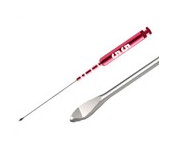
Wave one
These files shape the root canals using a reciprocating motion (reciprocal asymmetric motion), which means that they continually change their direction of rotation during the shaping procedure with a large turning angle in the cutting guide and an angle more small in the reverse direction (to progress along the course of the canal, respecting the anatomy of the root). They are for single use to respect the new protection standard.
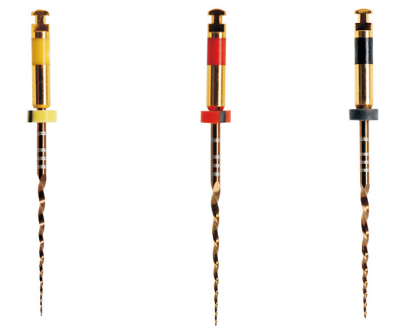
Hyflex.
Ideal files for narrow canals. these files are manufactured with a unique process in which the crystallographic phase transitions from austenite to martensite at room temperature.
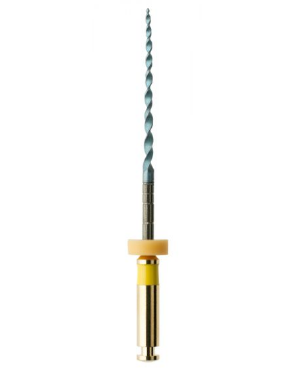
K3 Endo (Sybron Dental Specialties)
They are the Quantec files’ evolution since McSpadden and Kerr’s engineers have participated in their design.

Finally, we can highlight that knowledge of endodontic instruments is crucial in the practice of endodontics in all its stages.
The best endodontics begins with an accurate diagnosis. Thus, it is crucial to carry out an exhaustive study of each case and approach it correctly, choosing the appropriate materials, instruments, and techniques.
Knowledge of the internal configuration of the root canals is just as necessary as knowledge of the instruments. It is vital to avoid accidents and to be able to conserve a tooth in a functional way, as well as the tissues that surround it, such as bone, this being the purpose of endodontics.
At our dental supplies online store, the endodontic files list product at competitive prices and good quality as well as free delivery are available, learn more visit here https://www.dentallaboratorio.com/product-category/dentist-dental-supplies/dental-endo-files/


